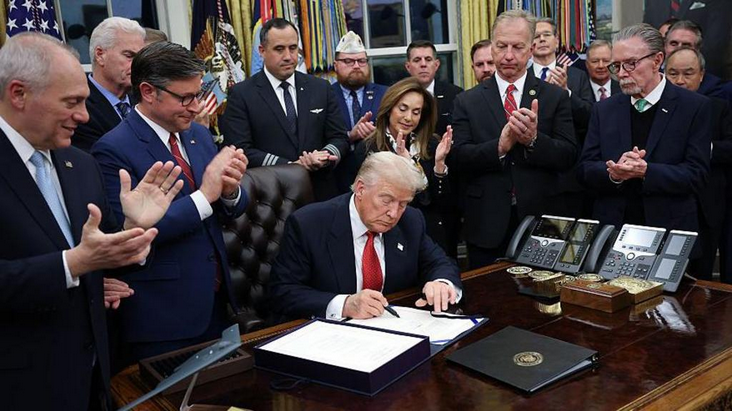
Trump Signs Bill Ending Longest U.S. Government Shutdown in History
Federal Workers to Resume Work After 43 Days of Economic Paralysis
Washington, D.C. – November 13, 2025
After 43 days of political deadlock and mounting public pressure, U.S. President Donald Trump signed a funding bill to end the longest government shutdown in American history.
The signing, which took place late Wednesday at the White House, restores federal operations and brings relief to millions of Americans directly and indirectly affected by the standoff.
The U.S. House of Representatives passed the funding package earlier in the day in a 222 – 209 vote, ending weeks of gridlock that had left hundreds of thousands of federal employees furloughed or working without pay.
The bill now funds the federal government through January 30, 2026, buying lawmakers time to negotiate a longer-term spending plan.
Economic Toll and Public Pressure
The shutdown had paralyzed critical federal services for over six weeks, delaying court operations, halting research programs, and suspending food-assistance benefits for low-income families.
Some economics have amounted the economic fallout ran into billions of dollars, with federal workers across the country forced to rely on food banks and emergency assistance programs.
“Federal employees have gone far too long without pay. This deal means relief is finally on the way,” said a congressional staffer who spoke on condition of anonymity.
The prolonged shutdown had also threatened to stall several ongoing infrastructure projects and defense contracts, creating ripple effects across multiple sectors of the economy.
Key Provisions of the Funding Bill
The legislation restores pay for federal workers, reopens national parks and public agencies, and revives suspended welfare programs, including the Supplemental Nutrition Assistance Program (SNAP).
However, it omits key Democratic priorities, such as the continuation of enhanced Affordable Care Act (ACA) subsidies, an issue that could reignite partisan tensions before the next deadline.
Political Implications
The shutdown, initially triggered by a dispute over healthcare and border-security funding, drew sharp criticism from both parties. Trump defended his position throughout, arguing that tough choices were necessary to reset the system.
He accused Democrats of attempting to extend healthcare benefits to illegal immigrants and condemned a proposed provision seeking to reverse parts of his tax and domestic policy bill, the “big, beautiful bill” which had curtailed Medicaid eligibility for undocumented immigrants.
Democrats, however, rejected Trump’s allegations, claiming that their goal was to permanently extend key Affordable Care Act (ACA) subsidies scheduled to expire at the end of 2025, not to expand benefits to non-U.S. citizens.
Analysts say Trump’s decision marks a political recalibration as the administration braces for renewed legislative battles over fiscal priorities in early 2026.
Relief for Workers, Warning from Economists
As federal offices prepare to reopen, many workers are breathing a sigh of relief. Most workers are eager to get back to work and recover from these weeks of uncertainty.
Economists, however, warn that the temporary nature of the deal could make the next few months precarious. “If lawmakers fail to reach a long-term budget agreement by January 30, we could see a repeat of this disruption,” said Dr. Steven Callahan of the Brookings Institution.
For now, America’s longest shutdown is over, but the fault lines in Washington’s political landscape remain as deep as ever.